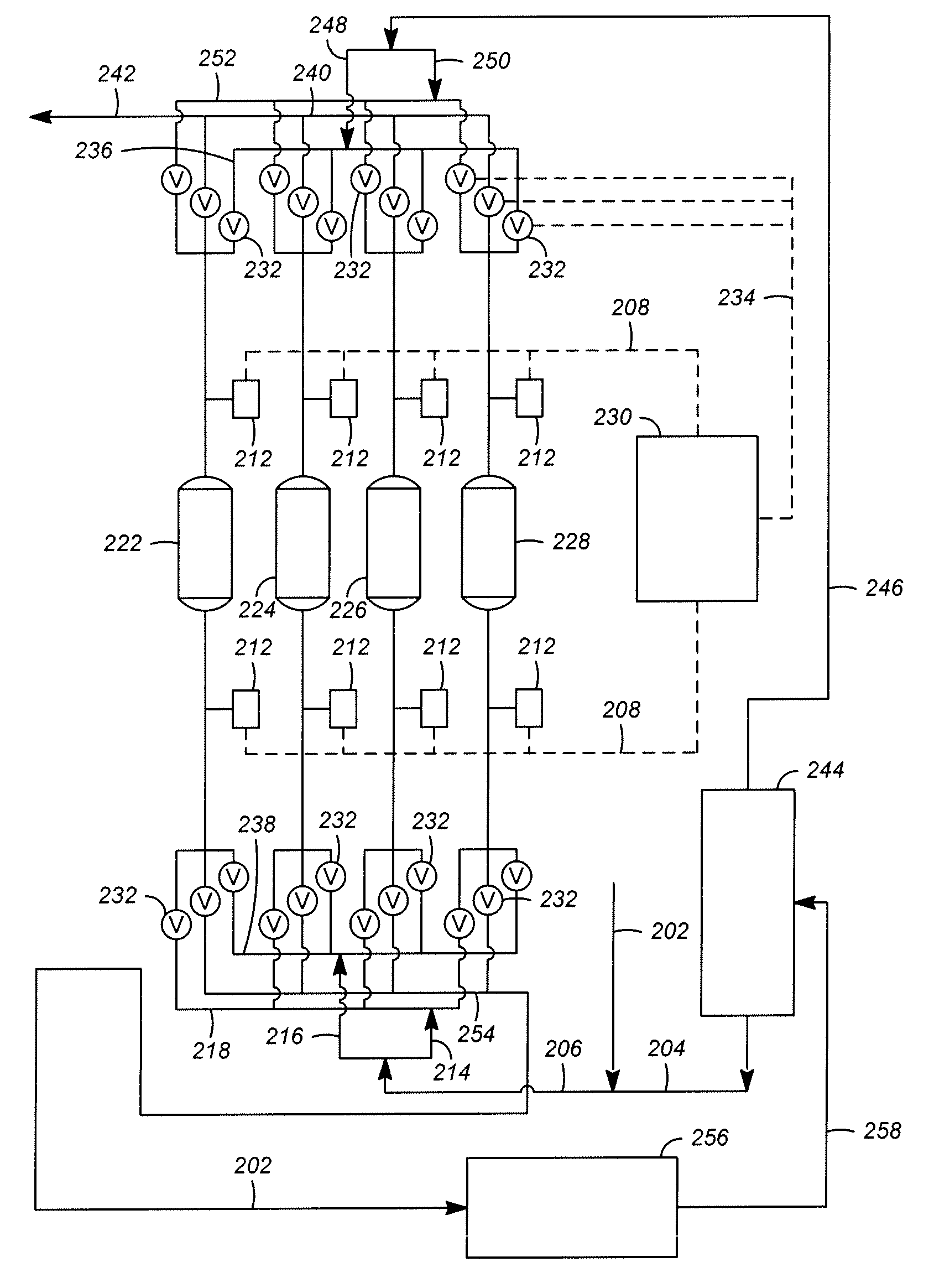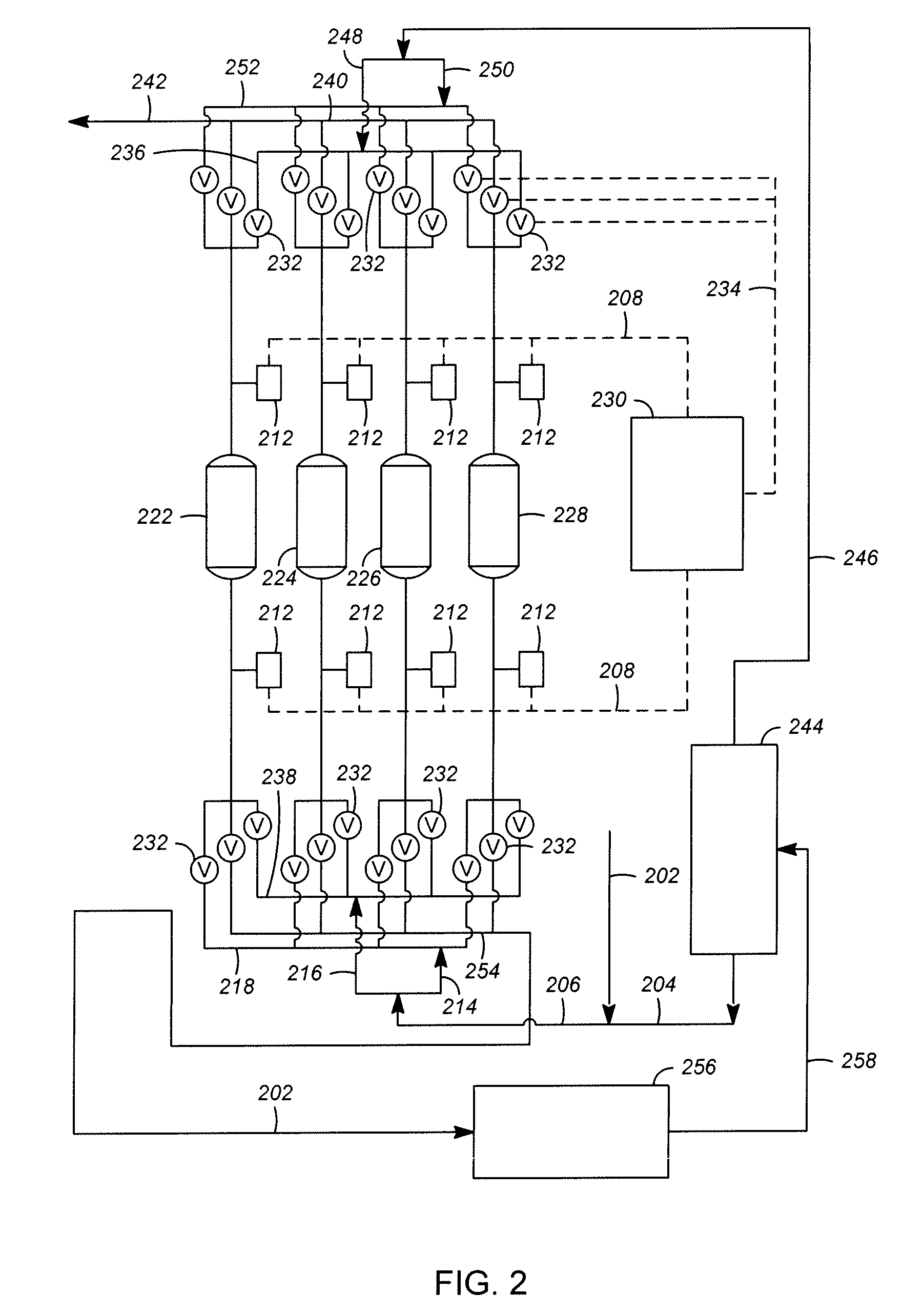Catalytic Alloy Hydrogen Sensor Apparatus and Process
a hydrogen sensor and catalyst alloy technology, applied in the field of hydrogen sensor, can solve the problems of limited solid-state sensor solutions to the problem of detecting hydrogen concentration, low device production yield, and limited experimental laboratory environmen
- Summary
- Abstract
- Description
- Claims
- Application Information
AI Technical Summary
Benefits of technology
Problems solved by technology
Method used
Image
Examples
example
[0062]A total isomerization process was monitored using the present invention and adjustments were made to flow rates and cycle times of the total isomerization process based on data collected using the present invention. Previously, gas chromatograph (GC) systems were used to periodically monitor the adsorptive separation portion of the total isomerization process and adjust parameters to optimize the refining process. Therefore, a GC system was also set up to verify the data collected using the catalytic alloy hydrogen sensor. The GC system was used to monitor hydrocarbons and hydrogen at specific locations within the total isomerization process and to compare the results to data collected from the present invention. The GC system had several drawbacks. First, the GC system required a complicated manifold and care was required to watch for and correct leaks. Over time, hydrocarbons in the hydrogen stream operates to deactivate the GC system and the sampling frequency is limited to...
PUM
 Login to View More
Login to View More Abstract
Description
Claims
Application Information
 Login to View More
Login to View More - R&D
- Intellectual Property
- Life Sciences
- Materials
- Tech Scout
- Unparalleled Data Quality
- Higher Quality Content
- 60% Fewer Hallucinations
Browse by: Latest US Patents, China's latest patents, Technical Efficacy Thesaurus, Application Domain, Technology Topic, Popular Technical Reports.
© 2025 PatSnap. All rights reserved.Legal|Privacy policy|Modern Slavery Act Transparency Statement|Sitemap|About US| Contact US: help@patsnap.com



